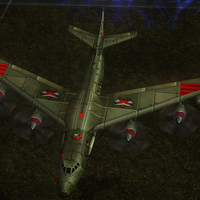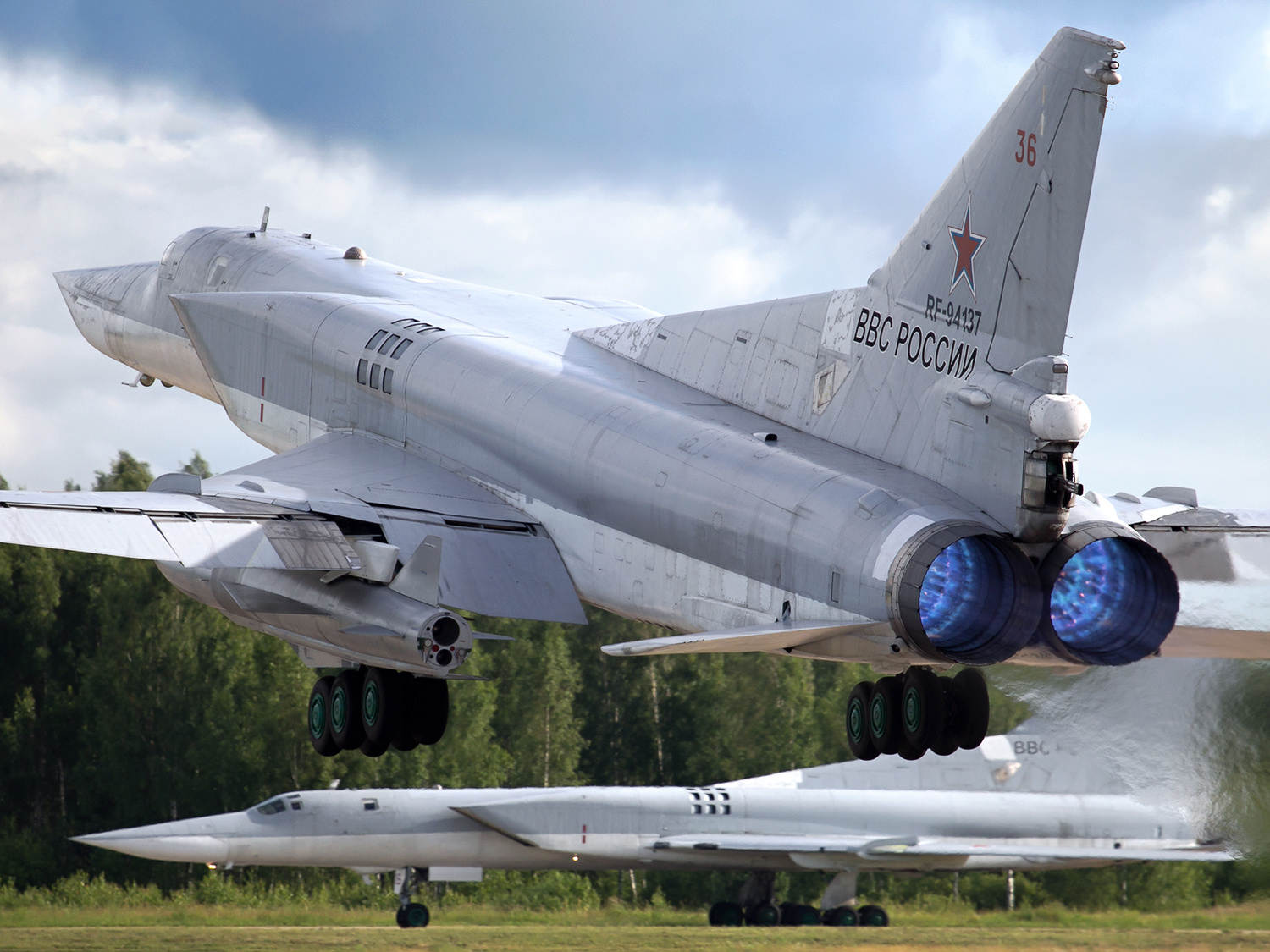Wiki Blackjack Bomber
Black Jack Brigade, nickname of the U.S. 2nd Brigade Combat Team, 1st Cavalry Division Tupolev Tu-160 (NATO reporting name: Blackjack), a Russian bomber VMF-441, nicknamed The Blackjacks, a United States Marine Corps fighter squadron. The 'Blackjack' also appears in Plan of Attack. Russia's Limo: 'Tupolev PAK-DA Perspektivnyi Aviatsionnyi Kompleks Dalney Aviatsyi- Future Air Complex for Strategic Air Forces' This recently announced aircraft is a fifth-generation bomber, expected to make its maiden flight around 2015-2020. The Mach 2 Tu-160 'Blackjack' was built only in tiny numbers, leaving the 1950s Tupolev Tu-16 and Tu-95 'Bear' heavy bombers to continue being used into the 21st century. The Avro Vulcan was part of the RAF V bomber force.
Russia's bomber fleet is a Soviet legacy force. With the exception of one Tu-160, the entire fleet was built in the Soviet Union. But the planes can still pack a punch if used intelligently and efficiently. Here's a look at their specs.
See also:Russia's Bombers Over Europe Are Scary, But Not in the Way You Think
Tu-160 (NATO Reporting Name: Blackjack)
The Blackjack is Russia's most capable strategic bomber. It is a supersonic variable wing aircraft — the world's largest — capable of carrying free-falling nuclear bombs and cruise missiles tipped with either conventional or nuclear warheads.
The problem for Russia is that the Tu-160 fleet is very small compared to its Tu-95 Bear and Backfire-C fleets. According to Douglas Barrie, an analyst at the International Institute for Strategic Studies in London, 'less than half are likely operationally available at any one time.'
Quantity in Russian air force: 16
Crew: 4
Max speed: 2,220 kilometers per hour.
Cruising speed: 960 kilometers per hour.
Strike Range: around 7,300 kilometers without in-flight refueling.
Armaments: The Tu-160 has two internal payload bays outfitted with anywhere from 6 to 12 cruise missiles loaded on rotary launchers. The launchers can be replaced by up to 20,000 kilograms of free-falling bombs. Extra weapons can be loaded under the plane as well.
Tu-22M3 (NATO Reporting Name: Backfire-C)
Russia's most versatile bomber, the Tu-22 is a multi-role supersonic aircraft with variable wings. It can be outfitted with nuclear weapons, cruise missiles, and anti-ship missiles.
The planes would likely be used to hit strategically important infrastructure and NATO vessels in the Black Sea, Mediterranean, and Baltic Sea.
Quantity in Russia's air force: around 63
Crew: 4
Max speed: 2,300 kilometers per hour.

Cruising speed: 900 kilometers per hour.
Strike Range: up to 5,000 kilometers depending on the weapons load
Armaments: 1 GSh-23 air defense cannon mounted on the tail, remote controlled. Anywhere from three to six cruise missiles can be loaded on the wings and internal payload bay.

Tu-95 (NATO Reporting Name: Bear)
The most common type of Russian strategic bomber is the famous Tu-95 'Bear,' which has been harassing European and NATO airspace boundaries over the last year.
The Tu-95 has been the staple of Russia's nuclear air force since the mid-1950s, and has been periodically modernized since then. The plane's defining characteristics are its four propeller driven engines and its bulbous underbelly.
The plane's old school design is a holdover from the its legacy as an upscaled knockoff of the U.S. B-29 Superfortress bomber — the plane that dropped atomic bombs on Hiroshima and Nagasaki in Japan.
Recent photos of Tu-95s show four so-called hard points installed under the wings, which allow the bombers to carry precision strike cruise missiles along with their nuclear payloads.
Quantity in Russia's air force: around 62
Crew: 6 to 7
Max speed: 920 kilometers per hour
Cruising speed: 550 kilometers per hour.
Strike Range: up to 7,000 kilometers depending on the weapons load
Armaments: automated guns in the tail to defend against incoming fighters. The Bear can deliver either 15,000 kilograms of free-falling bombs or a handful of cruise missiles mounted under its wings, depending on the model.
The B-1 Lancer is a supersonic strategic bomber with variable-sweep wings. The origins of the B-1 date back to the 1960s in a search for a supersonc bomber with sufficient range annd payload to replace the B-52 Stratofortress, but would develop into a subsonic low level long-range bomber. After several production delays the first B-1Bs entered service in 1986 with the United States Air Force.
- 3Specifications
Description[edit edit source]
The B-1 program was initiated in the 1970s with the hope of fielding a long-rang
e supersonic bomber capable of dashing at nearly mach 2; it was quickly canceled by 1977. However, in a twist of fate underneath the leadership of Ronald Reagan, the B-1 received a new lease on life as the marginally redesigned structure of the B-1B. Stealthy, fast, and able to carry a heavy payload, it was hoped that the B-1B would be able to replace America's aging fleet of old B-52's. However there were several problems with the design. Despite an impressive take-off weight of 477,000 pounds, the ability to dash at 900 miles per hour (a reduction in speed from the A's projected 1340 MPH), and excellent terrain following capability, the new aircraft also had to contend with fuel leaks and engine fires in its initial years of service. Maintenance was an enormous issue with the new bomber, as there was a severely low funding allocation to the bomber's logistics crews. After finally succeeding to raise this rate, the B-1B would end up losing its nuclear delivery capability by 1994, serving as a conventional bomber only. It would also never actually replace the B-52; it only replaced older models and the swing-wing F-111 strike fighter.
Despite these troublesome setbacks, the aircraft has managed to improve it's reputation in recent times; with the B-1B being used successfully in recent conflicts. The 'BONE' first got it's taste of combat in Iraq during 'Operation Desert Fox' in 1998. The following year, it would be used against Serbian forces in 'Operation Allied Force' being primarily used as an old fashioned 'bomb truck'. Following the September 11th attacks; the B-1B was one of many weapons systems that were brought to use against Taliban and Al-Qaeda forces in Afghanistan. During the U.S. led invasion of Iraq in 2003, the B-1B was used again with good results against enemy forces in support of the allied push into Baghdad. To this day the B-1B Lancer continues to be upgraded and is expected to serve well into the 21st century.
Variants[edit edit source]

- B-1A
The B-1A was the original B-1 design with variable engine intakes and Mach 2.2 top speed. Four prototypes were built; no production units were manufactured.
- B-1B
The B-1B is a r
evised B-1 design with reduced radar signature and a top speed of Mach 1.25. It was otherwise optimized for low-level penetration. A total of 100 B-1Bs were produced.
- B-1R
The B-1R is a proposed replacement for the B-1B, created from the existing aircraft. The B-1R (R for 'regional') would be a Lancer with advanced radars, air-to-air missiles, and Pratt & Whitney F119 engines. Compared to the B-1B, the B-1R would have a higher top speed of Mach 2.2, but its range would be 20% less.Existing external hardpoints would be modified to allow multiple conventional weapons to be carried, increasing overall loadout. For air-to-air defense, an Active Electronically Scanned Array (AESA) radar would be added and some existing hardpoints modified to carry air-to-air missiles. If needed the B-1R could escape from unfavorable air-to-air encounters with its Mach 2+ speed. Few aircraft are capable of over Mach 2 speeds, and those that are can maintain these speeds for only very short periods of time.
Specifications[edit edit source]

General characteristics[edit edit source]
- Crew: 4 (aircraft commander, copilot, offensive systems officer and defensive systems officer)
- Payload: 125,000 lb (56,600 kg) ; internal and external ordnance combined
- Length: 146 ft (44.5 m)
- Wingspan:
- Extended: 137 ft (41.8 m)
- Swept: 79 ft (24.1 m)
- Height: 34 ft (10.4 m)
- Wing area: 1,950 ft² (181.2 m²)
- Airfoil: NA69-190-2
- Empty weight: 192,000 lb (87,100 kg)
- Loaded weight: 326,000 lb (148,000 kg)
- Max takeoff weight: 477,000 lb (216,400 kg)
- Powerplant: 4× General Electric F101-GE-102 augmented turbofans
- Dry thrust: 14,600 lbf (64.9 kN) each
- Thrust with afterburner: 30,780 lbf (136.92 kN) each
- Fuel capacity, optional: 10,000 U.S. gal (38,000 L) fuel tank for 1–3 internal weapons bays each
Performance[edit edit source]
- Maximum speed:
- At altitude: Mach 1.25 (721 knots, 830 mph, 1,340 km/h at 50,000 ft/15,000 m altitude)
- At low level: Mach 0.92 (700 mph, 1,130 km/h at 200–500 ft/60–150 m altitude)
- Range: 6,478 nmi (7,456 mi, 11,998 km)
- Combat radius: 2,993 nmi (3,445 mi, 5,543 km)
- Service ceiling: 60,000 ft (18,000 m)
- Wing loading: 167 lb/ft² (816 kg/m²)
- Thrust/weight: 0.38
Armament[edit edit source]
- Hardpoints: six external hardpoints for 50,000 lb (22,700 kg) of ordnance (use for weapons currently restricted by START I treaty) and 3 internal bomb bays for 75,000 lb (34,000 kg) of ordnance.
- Bombs:
- 84× Mk-82 AIR inflatable retarder general purpose bombs
- 81× Mk-82 low drag general purpose bombs
- 84× Mk-62 Quickstrike sea mines
- 24× Mk-65 naval mines
- 30× CBU-87/89/CBU-97 Cluster Bomb Units (CBU)
- 30× CBU-103/104/105 Wind Corrected Munitions Dispenser
- 24× GBU-31 JDAM GPS guided bombs
- 15× GBU-38 JDAM GPS guided bombs (Mk-82 general pu4pose warhead)
- 24× Mk-84 general purpose bombs
- 12× AGM-154 Joint Standoff Weapon
- 96× or 144× GBU-39 Small Diameter Bomb GPS guided bombs (not fielded on B-1 yet)
- 24× AGM-158 JASSM
- 24× B61 thermonuclear variable-yield gravity bombs (no longer carried)
- 24x B83 nuclear bomb (no longer carried)
Avionics[edit edit source]
- 1× AN/APQ-164 forward-looking offensive passive phased-array radar
- 1× AN/ALQ-161 radar warning and defensive jamming equipment
- 1× AN/ASQ-184 defensive management system
- 1× Lockheed Martin Sniper XR targeting pod (optional)
Tu 160 Blackjack Bomber
See also[edit edit source]
Soviet Blackjack Bomber
| This page uses Creative Commons Licensed content from Wikipedia (view authors). |